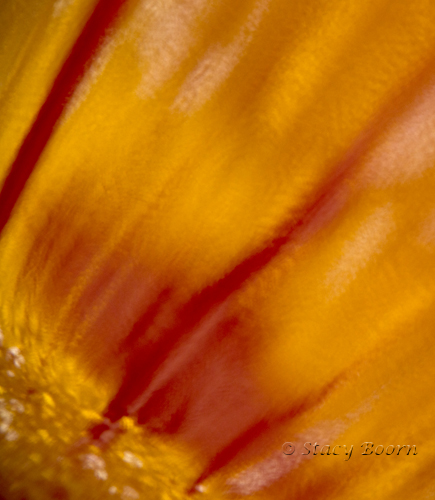Myth says the mustard was planted by California missionaries as they walked from mission to mission dropping mustard seeds. They knew that, on the next years’ journey when the path was overgrown with grass and vegetation, the yellow of the mustard would mark the way. Each mission is planted about one day’s walk from the other.
Annually I follow similar paths in Napa Valley where I am welcomed by the yellows of the wild mustard planted among the vineyards. In addition to the mustard plant’s beauty it does serve several practical purposes. It provides habitat for birds that will eat specific bugs and worms (nematodes) that attack the vines. In addition, the mustard’s root system helps open up the soil to allow it to better receive the water and nutrients so necessary for the vines. Finally, when the mustard is plowed under, it too provides food for the vines.
For me, the mustard supplies oceans of yellow as subject or background color. The naked grape vines seem to emerge from the flowing yellow much like palm kelp at low tide. Lots of depth-of-field captures the merging lines of the rows of vines and the yellow pathways between them.
With lots of depth-of-field, everything is seen in focus. But if the camera is set to a shallow depth-of-field, it renders a mystical moment which gives me the feeling that all is well. By placing the camera lens close to mustard blooms, f/4.5 and focusing far down the vineyard row you can create wonderful yellow orbs, halos and blankets of color in your foreground.

Zoomed to 150 mm, f/5.6, I focused just before the Red Barn of Leap Frog Winery to create this mystic moment!
English mystic Julian of Norwich lived in a time of turmoil (1342-1416), but her theology was optimistic and spoke of God’s love in terms of joy and compassion, the direct opposite to the law and duty proclaimed by the institutional church of her day. For Julian, suffering was not a punishment that God inflicted, as was the common understanding. She believed that God loved everyone and would save them all. Her saying, “All shall be well, and all shall be well, and all manner of things shall be well,†reflects her theology. Julian claimed these words were spoken directly to her by God.
I hope one or two stalks of mustard are still blooming on May 8, Julian’s feast day. I will hear the yellow flowers sing out: “All shall be well, and all shall be well, and all manner of things shall be well.”
You may find other vineyard shots in my Art on the Vine portfolio.

